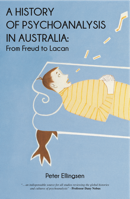Progress is a funny thing. Not just because, as the French say, ‘the more things change the more they stay the same’, but because some aspects of us are resistant to updating. Despite my affection for vinyl, turntables and valve amplifiers, this does not appear to be true of music.
Not only have the old platforms for listening atrophied, they are, for the young, as irrelevant as ear trumpets. This was brought to light recently when Emily White, an intern on National Public Radio in the US, wrote of how, at 21, she had never ‘gone through the transition from physical to digital’. With 11,000 songs on her computer, she is music-centric, but has bought just fifteen CDs. And no, she does not miss album packaging and liner notes.
Could this happen to psychotherapy and psychoanalysis? We already have online counselling, the equivalent of doing away with ‘physical’ sessions. It would seem a small step for therapy to move exclusively online; something similar is, after all, underway in tertiary education. Why should the talking cure be any different?
One reason is that it is as much a listening cure as a talking one, and listening assumes an audience that, to be effective, is sensed more than seen. This is the transference, the weird occurrence by which we continually mistake those we meet for someone we already know.
It is the mechanism that underlies therapy and means that when someone speaks they can’t help but address a figure from the past, usually a parental imago. Such speaking, as Freud found, allows unconscious, unresolved conflicts with childhood figures to be re-thought. But to work, it requires a special sort of bond to be forged with the therapist. It is not a business contract, or consumer protocol. It can’t be guaranteed by payment or verbal agreement. It is forged out of a social bond that is anything but social, and relies on therapy being stubbornly anachronistic, that is, out of time, and, I would argue, in the room.
This is because the time that rules the psyche is not dictated by the clock, but the unconscious. It is a notoriously atemporal entity which makes what ails us immune to fashionable change, even so-called ‘progress’. DSM’s fetish for turning old states into new ailments (the proposed grief disorder comes to mind) notwithstanding, we suffer not that differently to our ancestors.
Yes, the emphasis is different; we rarely see patients showing the conversion disorders Freud encountered, and modern life does accentuate certain traits. But the underlying structures that prompt us to run aground are similar. For psychoanalysis, the diagnostic categories remain just three — neurosis, psychosis and perversion. Of the first and by far most common category — which is comprised of hysteria and obsession — there persists a distinctly old fashioned theme.
It is the ‘uncanny’, a quality that is timeless. You can find it in Shakespeare as easily as you can in a TV series like ‘House’. It is what Freud was getting at when he wrote to his fiancée, Martha Bernays, of the ‘great problems of knowledge and real riddles of life’ with ‘conflicts of feelings and impulses, confirming the awareness of our perplexity in the mysteriousness that reigns everywhere’. It is this mysteriousness that, while ever-present and worthy of reflection, we attempt to sideline with notions of progress. According to Freud, we confine ourselves to a ‘narrow aim every hour and every day and get used to the idea that to concern oneself with these enigmas is the task of a special hour, in the belief they exist only in those special hours. Then they suddenly assail one in the morning and rob one of one’s composure’.
What he is describing is the unconscious, something that Freud and his early collaborator Josef Breuer saw at work in hypnosis. They noticed that a hypnotic suggestion would not only operate with the subject seemingly unaware of it, but that it functioned in a timeless way. Later, in treating the ‘Rat Man’, Freud noticed that, while ‘everything conscious was subject to a process of wearing away, what was unconscious was relatively unchangeable’. This he linked to illness, noting that the unconscious was a part of the self that had become split off in infancy and, because it had not shared later development, became repressed.
But to get at it patients had to do something counter-intuitive. They had to stay in unknowing and speak without censoring themselves, not to a computer, but to a person, one who also has an unconscious, and can reflect on what is being said. This was free-association, the so called ‘Golden Rule of psychoanalysis’, which has been linked to the confessional and the spread of technology, specifically radio networks. But while such comparisons may appear valid, they are wide of the mark and arise because the unconscious has been by-passed.
Psychoanalysis does not work like the confessional. One may speak in the presence of an analyst with the hope of being forgiven, but that is not the role of the analyst. And what takes place in analysis is not the same as an exchange of views over the air. In analysis, unlike an internet dial-up, the point is not to get the message of the speaker. The point is to hear oneself — one’s unconscious — open up, which it will do, and in a very physical rather than digital way.

